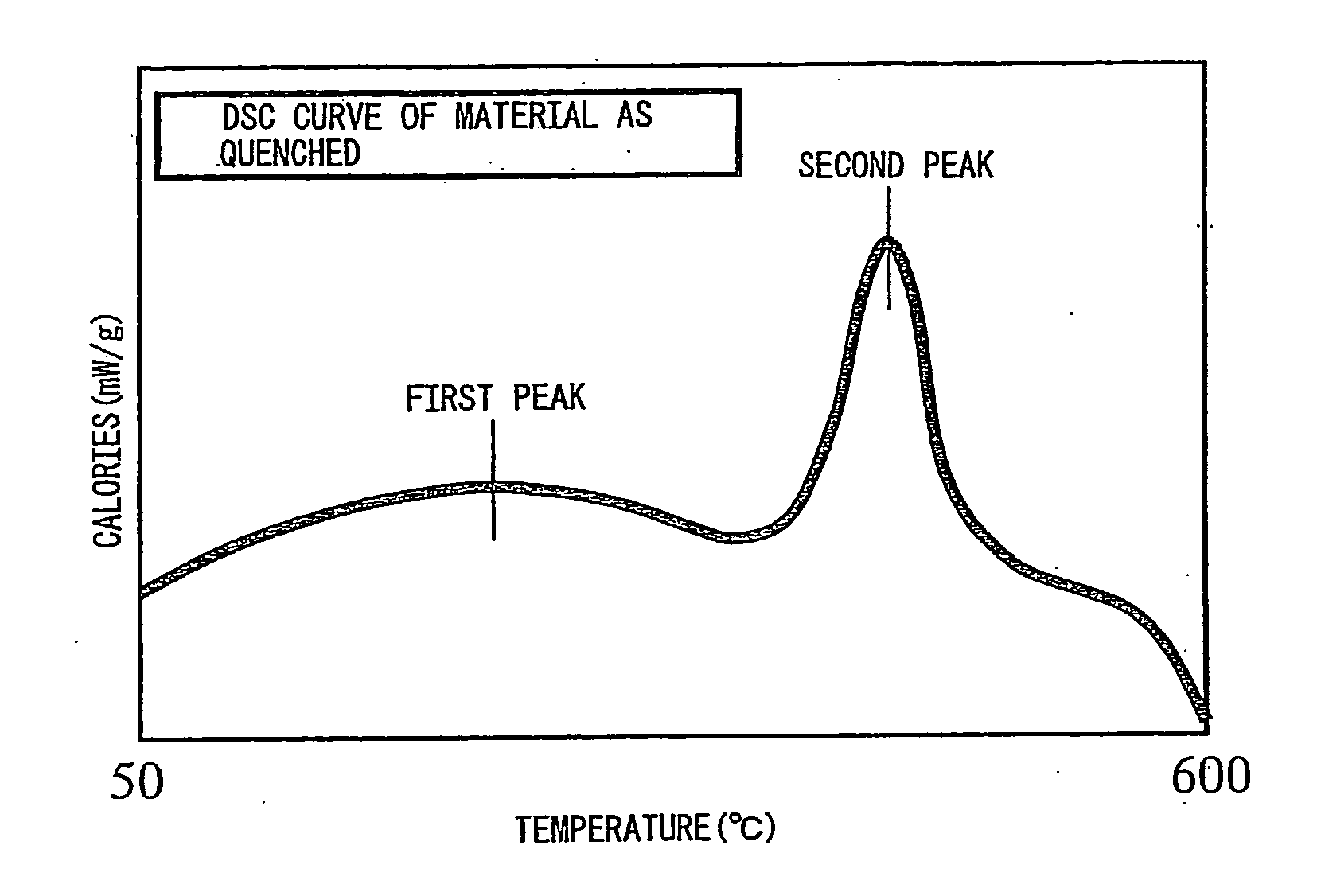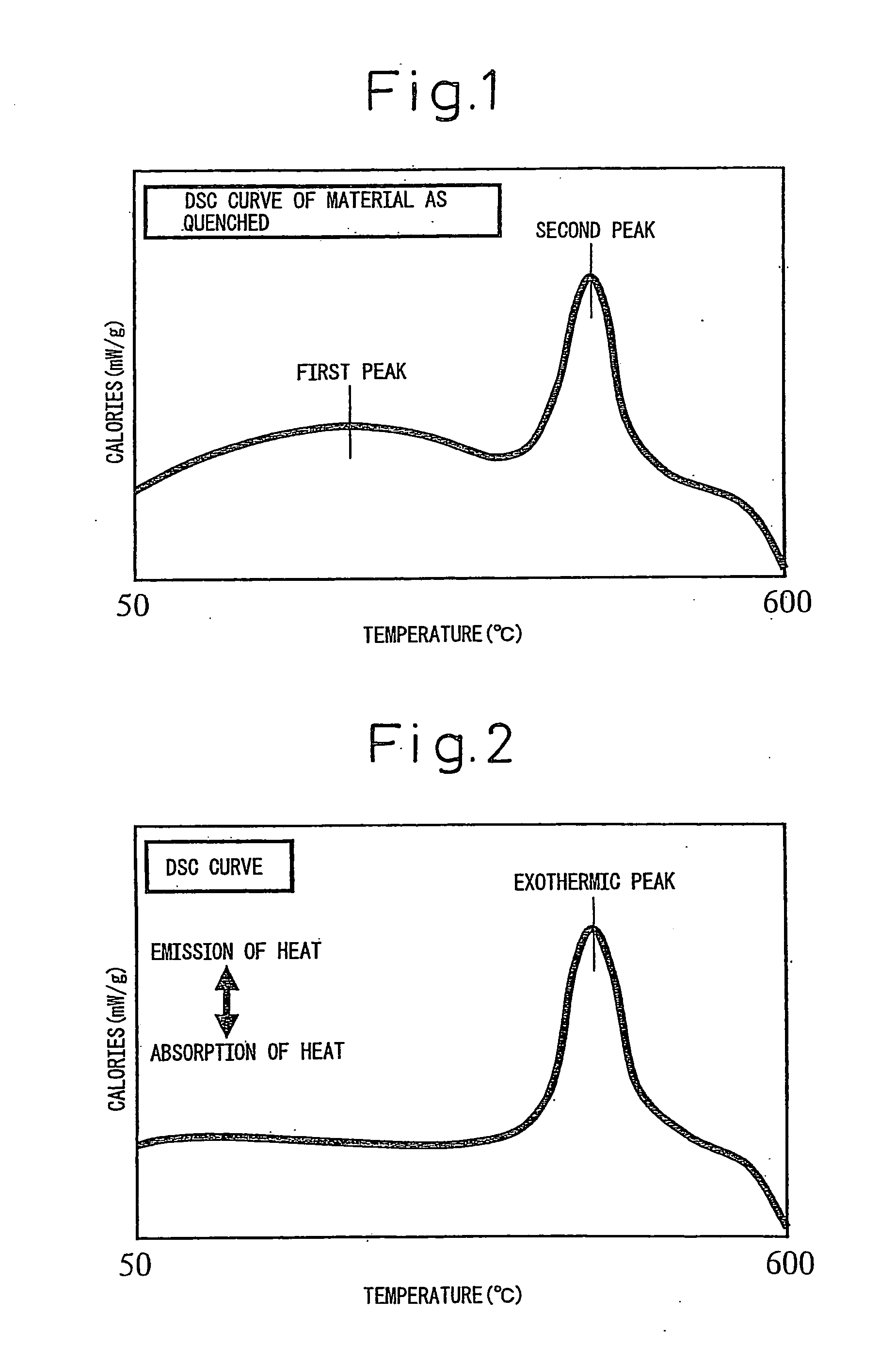High strength spring steel wire and high strength spring and methods of production of the same
a high-strength steel wire and spring technology, which is applied in the field of high-strength spring steel wire and high-strength spring and methods of production of the same, can solve the problems of unavoidable peeling of paint, unavoidable corrosion and pitting, and improve the corrosion fatigue characteristics, etc., and achieve high strength, high strength, high strength
- Summary
- Abstract
- Description
- Claims
- Application Information
AI Technical Summary
Benefits of technology
Problems solved by technology
Method used
Image
Examples
example 1
[0069]Below, examples will be used to further explain the present invention.
[0070]Converter produced steels having the compositions shown in Table 1 were produced by continuous casting and, in accordance with need, soaked and diffusion treated and cogged to obtain 162 mm square rolled materials. Next, hot rolling was performed to obtain wire material shapes of diameters of 13 mm. These were annealed in accordance with need, then cold drawn, then cut to predetermined lengths to obtain rods.
[0071]Next, these were heated in a heating furnace to 980° C. and held there for 30 minutes, then the rods were wrapped around a drum hot to form them into predetermined spring shapes which were then immediately immersed in oil for quenching. Further, the material for obtaining the tensile test piece and Charpy impact test piece was quenched as in a rod shape without forming it into a spring shape.
[0072]Next, a spring shaped material and rod material were tempered under the conditions shown in Tabl...
example 2
[0077]Wire materials of diameters of 13 mm of Steel Nos. A to J shown in Table 1 hot rolled in the same way as Example 1 were used to evaluate the effect of suppression of decarburization by the addition of Sb. The wire materials were straightened, then ground at their outer circumference to remove the effects of the initial surface layers and obtain 12φ rod test pieces. The test pieces were heated to 870° C., was then held for 30 minutes, then were transferred to a 750° C. furnace, held there for 60 minutes, then air-cooled. The heat treatment was all performed in the atmosphere. The heat treatment conditions were heat treatment conditions very conducive to decarburization. After the heat treatment, the C cross-sections of the rod test pieces were cut, polished, and corroded by nitral and the depths of the decarburized layers of the surfaces were measured.
[0078]The results are shown in Table 3. Steel A has no Sb added, while Steel J has substantially the same ingredients as Steel A...
PUM
| Property | Measurement | Unit |
|---|---|---|
| temperature | aaaaa | aaaaa |
| temperature | aaaaa | aaaaa |
| strength | aaaaa | aaaaa |
Abstract
Description
Claims
Application Information
 Login to View More
Login to View More - R&D
- Intellectual Property
- Life Sciences
- Materials
- Tech Scout
- Unparalleled Data Quality
- Higher Quality Content
- 60% Fewer Hallucinations
Browse by: Latest US Patents, China's latest patents, Technical Efficacy Thesaurus, Application Domain, Technology Topic, Popular Technical Reports.
© 2025 PatSnap. All rights reserved.Legal|Privacy policy|Modern Slavery Act Transparency Statement|Sitemap|About US| Contact US: help@patsnap.com


